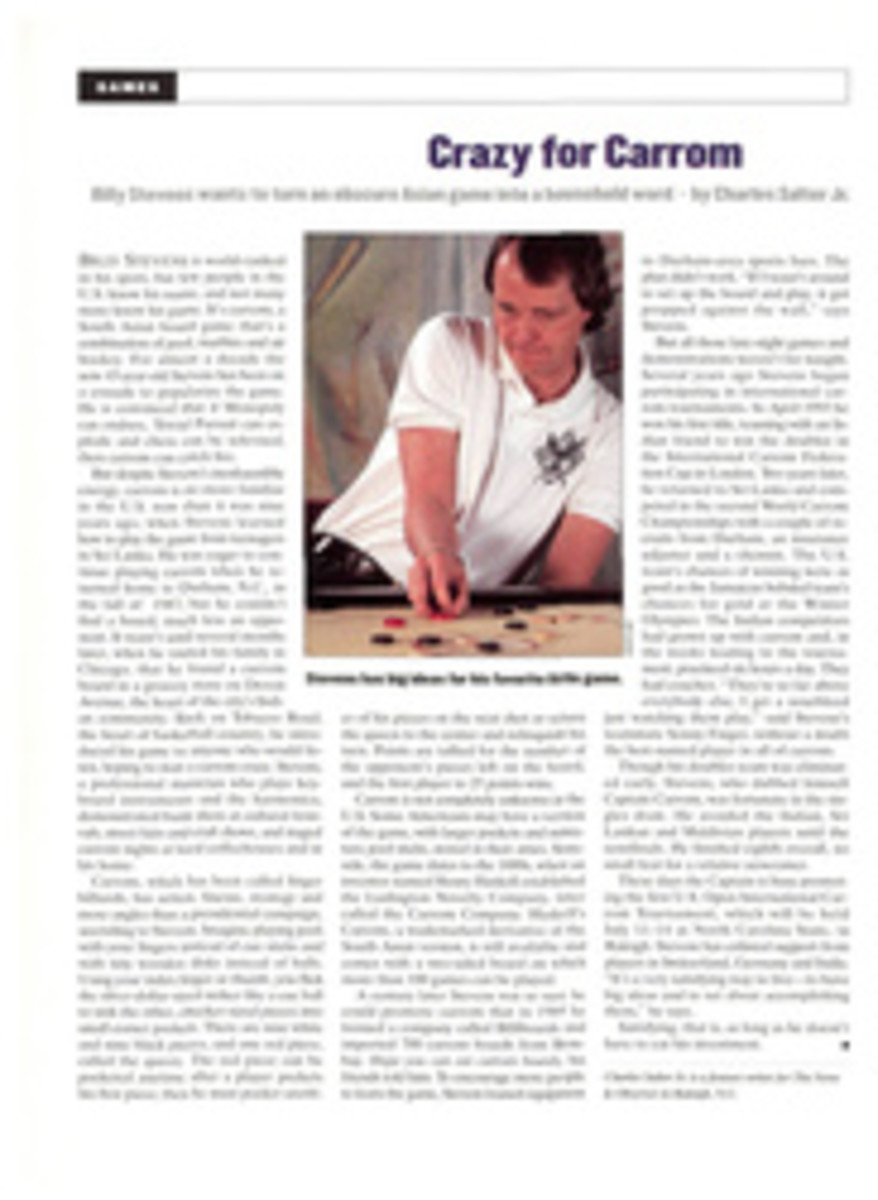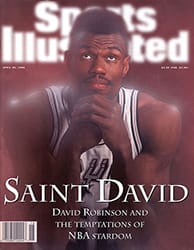
THE RIVER ROLLS--AND ROLLS INDIAN RIVER HAS 40 NATIONAL MEN'S AND WOMEN'S JUNIOR COLLEGE TITLES IN 22 YEARS
One dewy Friday morning last September, the 42 men and women on
the swim teams at Indian River Community College in Fort Pierce,
Fla., staggered onto the deck of the swimming complex for their
six o'clock workout. They expected to swim laps, as usual.
Instead, coach Chris Ip pulled out a boom box and told the
swimmers they were about to take a dance lesson. Claudia
Velasquez, a sophomore breaststroker from Lima, Peru, would
teach them la macarena, a popular Latin step. "We turned on the
music, and right away a couple of the other Spanish-speaking
athletes got up there, and in a few minutes the whole team was
doing it," Ip says. "Then they all wanted to teach a dance."
So the following week there were lessons in country line
dancing, and Friday-morning sock hops became the rule. Ip had
planned the first dance diversion as a way to help the team bond
quickly. How better to get to know one another than to embarrass
themselves in public?
The 39-year-old coach also had another motive. "I'm a terrible
dancer," he says, "and this was a way for me to figure out what
the kids are doing now."
Meanwhile, the nation's other junior college swimming squads are
trying to figure out how to defeat Indian River in the pool,
where it has been dominant for more than two decades. The River,
as the school is known, has amassed 22 straight men's National
Junior College Athletic Association championships, a string of
U.S. titles unmatched by any other school in any sport. The
Indian River women's team, for its part, has won 14 straight
national titles, 18 overall.
When Dick Wells, a former high school swimming coach, was hired
as Indian River's athletic director in 1974, he started a men's
swim team, which he led himself. At the national meet in the
Pioneers' first spring of competition, Wells spent more time
watching Indian River's opponents than coaching his own
swimmers. "I assessed the level of competition, the times and so
forth," says Wells, who left Indian River in 1977. "Then I
recruited swimmers who were near that level."
By following this simple-sounding strategy, Indian River won its
first national title the very next year. The women's program,
added in the fall of '75, earned its first championship in '77.
Such rapid success did not surprise Wells. "It really wasn't
that difficult to achieve that first title, and from there it
became easier," he says. With Indian River's attractive South
Florida location and a swim program generously supported by the
school administration, Wells never found recruiting very tough.
The team's first few national championships added to the
school's allure.
The east exterior wall of Indian River's gymnasium, which is
adjacent to the outdoor pool, has become a striking monument to
the Pioneers' success. Forty rectangular yellow panels, one for
each national title, cover much of the wall. "Whatever
motivation the team doesn't give you, the wall does," says
sophomore freestyler Rachael Amman. "You want your name up
there, and you don't want to let down all the rest of the people
up there."
This year there was little chance of such a letdown. At the
NJCAA meet in Fort Lauderdale, March 13-16, Indian River set
NJCAA records in both the men's and the women's 200-yard
freestyle relay on the way to defeating 10 men's and 11 women's
teams and repeating as national champs.
Those 200-yard relay teams exemplify the diversity of Indian
River's squads. On the men's side were Julio Santos, who
attended high school in Miami for a year but grew up in Ecuador,
for which he will swim in the Summer Olympics in Atlanta; Kevin
Bobzien, from Orange, Calif.; Chris Olafson, from Junction City,
Ore.; and Charlie Bock, from Wagontown, Pa. The women's team
consisted of Paula Marsiglia, from Sao Paulo, Brazil; Amman, who
is from Eustis, Fla.; Melinda Cattell, from Aberdeen, Md.; and
Katie Smith, from Anniston, Ala. "Last year I lived with a guy
from England, a guy from Colombia and a guy from the U.S.," says
Michael Andersen, a sophomore freestyler from Risskov, Denmark.
"We'd sit around for whole evenings just talking about our
countries."
Most swimmers who go to junior college fall into one of three
categories: strong swimmers who want to become stronger students
before they go on to four-year schools; swimmers who aren't
being recruited by Division I schools but have the potential to
be; and athletes from foreign countries who want a small-school
environment in which to improve their English and adjust to U.S.
culture before moving to a large university.
Most of the Pioneers swimmers move on to Division I programs.
With this in mind, Ip insists upon both mandatory study halls
and grueling workouts. "My goal is to treat this program in all
aspects like a top Division I program, so the athletes are used
to that type of training and to the demands on them
academically," the coach says. "Four-year schools can say, 'I
know what I'm going to get from Indian River. I'm going to get a
solid student who can handle everything.'"
Indian River coaches also have been recruited by big schools.
Richard Bader coached the Pioneers from 1986 to '89, then was
hired to coach Michigan State. Former Indian River assistant Dan
Colella is now the women's coach at Tennessee. Auburn coach Dave
Marsh did not coach at Indian River, but he did swim there from
1976 to '78.
Ip took over at Indian River after three years as the head coach
at Delaware. A former freestyler and breastroker, Ip trained
throughout high school and college with the now infamous
Foxcatcher swim team, sponsored by John du Pont. Ip was a
Division II All-America at East Stroudsburg (Pa.) State College,
and he started coaching upon his graduation in '78, first as an
assistant at his alma mater, then as an assistant at Brown
before his tenure at Delaware. In Ip's seven years at the River,
his teams have lost only four dual meets.
One of the men's losses came in February to Broward Community
College, the only other Florida junior college with a swimming
program. Broward provides tough competition for the Pioneers
during the season, but at the national championships, Indian
River's depth gives it the advantage. Schools are allowed to
take 18 men and 18 women to the nationals, but few juco teams
can muster that many swimmers. Indian River, which has 15 men
and 15 women on swimming scholarships, has to leave athletes
home.
The team tradition includes a highly prized icon: an airbrushed
T-shirt that former Pioneers assistant Reid Lewis, who competed
on the school's first and second teams, had made for himself in
1980. The lettering on the T-shirt reads THE RIVER FLOWS.
"Everybody on the team asked me for that shirt, and there was no
way I was going to give it away," Lewis says. But at the '80
national championship in Rochester, N.Y., Indian River freshman
Bucky Duke set a school record in winning the men's 100
butterfly. During the postmeet celebration, Lewis took off the
shirt and said to Duke, "Here, you can have this. Give it to
someone else next year."
The once bright-yellow garment is now a dingy beige. Out of
respect for its age, it is no longer worn. "I've put it on for
pictures and taken it home a few times, but I don't want to lose
it or ruin it," says Olafson, holder of the shirt during the
1995-96 school year. "It's a little fragile." At a team banquet
the night after the River won this year's national titles,
Olafson passed the shirt on to Bock.
Lewis is also credited with another of the River's traditions.
One of the most popular cheers passed down over the years is
called the Pioneer Boogaloo. Lewis learned a version of it
during the two years he swam at Kent State after graduating from
Indian River. It was part of the Pioneers' celebration in Fort
Lauderdale this spring. The victorious athletes chanted:
We're No. 1,
Can't be No. 2,
Come on, everybody,
Do the Pioneer Boogaloo.
Then the swimmers and their coaches danced. They danced very
well.
COLOR PHOTO: PHOTOGRAPHS BY AL MESSERSCHMIDT The River towered over its competition at the nationals in March, taking both titles again. [Indian River Community College men's and women's swim teams posing on diving platforms]
TWO COLOR PHOTOS: PHOTOGRAPHS BY AL MESSERSCHMIDT Ip's insistence on hard work both in the water and in class attracts talents such as Olafson (top). [Chris Ip; Chris Olafson]

